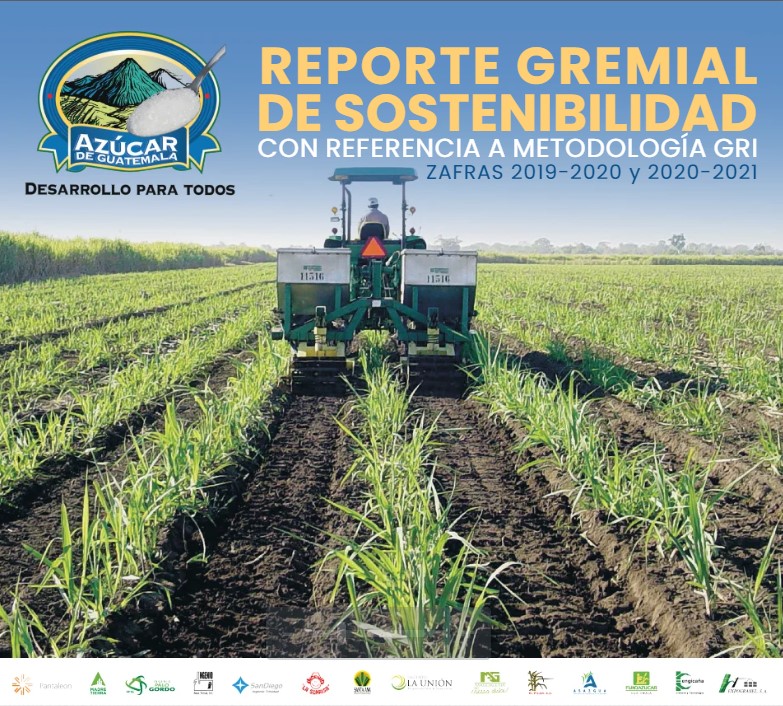The Guatemalan Sugar Industry presented its Sustainability Guild Report for the 2019/20 and 2020/21 harvest seasons, elaborated with the assistance and collaboration of the International Labor Organization -ILO-; The report highlights the progress achieved in terms of environmental, social, and economic sustainability.
The Sustainability Guild Report uses the GRI methodology to integrate into documentary reporting with evidence. The GRI Standards are international best practices designed to inform the public of a variety of economic, environmental, and social impacts. Sustainability reporting against these Standards provides information about organizations’ contributions to sustainable development.
The report addresses 16 key sustainability points of the Guatemalan Sugar Industry. Among them: environmental actions, generation of clean and renewable energy, the rational use of water and the implementation of systems for the efficient use of the resources, the commitment of the sector to the care and restoration of biodiversity, the reuse of waste, among others.

In the social area, the promotion of decent working conditions with safety and health, training to promote skills improvement and professional development to employees, the guarantee that there is no child labor, the evaluation of compliance with regulations in cane suppliers, evaluation of compliance in the matter of respect of human rights, actions in communities to mitigate impacts of the operation, among others. In the economic sphere, taxation, support for local suppliers and vulnerable groups.
“It has been a great effort through several years to advance to this point with the integral perspective of PEOPLE + PLANET + PROFIT”, commented Alfredo Vila, president of the Guatemalan Sugar Producers Association -Asazgua-.

He explained that since 2000 there is a system of Guild Governance, within the framework of national legislation, with Policies and Regulations. “In the Guatemalan Sugar Industry, we are committed to agricultural sustainability and sustainability,” he added.
Similarly, Randall Arias, Principal Specialist in activities with employers ACTEMP/ILO Central America, Panama, the Dominican Republic, and Haiti highlighted that, in addition to the quality of the report, the methodology and academic rigor, the guild vision of business associations is remarkable. “Today you set the standard for guilds not only in Guatemala, I serve 10 subregional countries, this is the first report from a guild. I want to congratulate Asazgua leaders for this extraordinary effort and for their commitment and ethics to report transparently”.
In addition, the document lists the governance policies and actions: Corporate Social Responsibility CSR, Labor Policy, Transportation Policy, HIV Policy, OHS Policy, Alignment to the Millennium Development Goals that when changing the Alignment to the Sustainable Development Goals, Environmental Policy, Environmental Guide of the Sugar Cane Sector with the Ministry of Environment, Policy for Suppliers and Policy of Respect for Human Rights.










